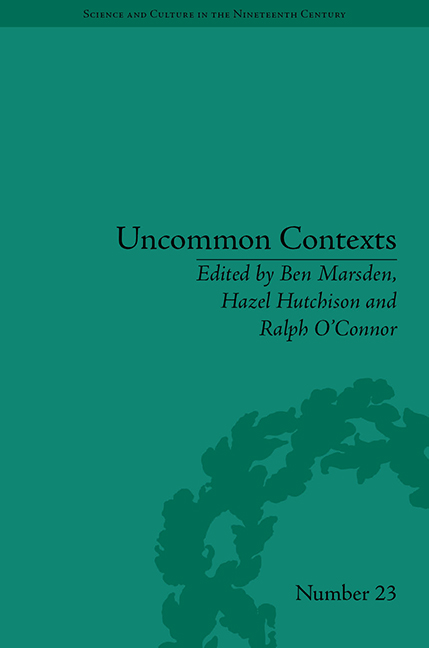Book contents
- Frontmatter
- Contents
- Acknowledgements
- List of Contributors
- List of Figures
- Introduction
- I Literary Genres of Science Writing
- 1 The Experimental Novel and the Literature of Physiology
- 2 An Active Nature: Robert Hunt and the Genres of Science Writing
- 3 Hyena-Hunting and Byron-Bashing in the Old North: William Buckland, Geological Verse and the Radical Threat
- II Pushing the Boundaries of ‘Literature and Science’
- Part III Science and Technology in Fiction
- Notes
- Index
1 - The Experimental Novel and the Literature of Physiology
from I - Literary Genres of Science Writing
- Frontmatter
- Contents
- Acknowledgements
- List of Contributors
- List of Figures
- Introduction
- I Literary Genres of Science Writing
- 1 The Experimental Novel and the Literature of Physiology
- 2 An Active Nature: Robert Hunt and the Genres of Science Writing
- 3 Hyena-Hunting and Byron-Bashing in the Old North: William Buckland, Geological Verse and the Radical Threat
- II Pushing the Boundaries of ‘Literature and Science’
- Part III Science and Technology in Fiction
- Notes
- Index
Summary
In his famous 1880 essay, ‘The Experimental Novel’, Émile Zola modelled literature on the physiological laboratory. The writer, he proposed, should experiment with his fictive subjects, manipulate their feelings and alter their environments in order to grasp the laws of nature: ‘we should operate on the characters, the passions, on the human and social data … as the physiologist operates on living beings’. Zola drew extensively on Claude Bernard's 1865 Introduction to the Study of Experimental Medicine, which described the central role of the laboratory for the production of scientific knowledge, the use of instruments to penetrate bodies and prise them apart, to intervene in the course of life, altering or destroying it: ‘One must be brought up in laboratories and live in them … stir the fetid and throbbing ground of life’. As physiology for Bernard was foundational to pathology and therapeutics, so the novel, after passing through the ‘long and ghastly kitchen’ of experiment, would acquire diagnostic and curative powers. Having successfully operated on his characters, the writer might go to work on his readers: ‘It will often be but necessary’, Zola writes, ‘to replace the word “doctor” by the word “novelist”’.
It is hard to imagine such an overt conjunction between literature and physiology in nineteenth-century Britain, or one that placed authors in such a deferential position towards scientific authority.
- Type
- Chapter
- Information
- Uncommon ContextsEncounters between Science and Literature, 1800–1914, pp. 21 - 38Publisher: Pickering & ChattoFirst published in: 2014



